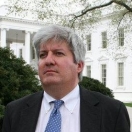
In support of President Obama’s Lab to Market Initiative, the Department of Energy’s Office of Energy Efficiency and Renewable Energy recently launched Lab-Corps, an intensive entrepreneurial boot-camp designed to help scientists transition their research to the market. Lab-Corps, based on the National Science Foundation’s I-Corps, has already provided entrepreneurial training to 28 teams from eight national laboratories. Today, a third cohort will kick off their training in Golden, Colorado, adding eight more teams to the Lab-Corps roster.
Recently, I spoke with Ralph Muehleisen, a researcher from Argonne National Laboratory about his experience in Lab-Corps.
What technology are you working to commercialize?
The Sonic Leak Quantifier (SonicLQ) is a technology that uses sound to locate air leaks in buildings and determine the size of those leaks. Sound waves move through holes in a building’s exterior in the same manner as air, so SonicLQ uses a speaker inside the building to generate sound waves and a network of microphones outside to determine where the waves escape the building and how much sound is released.
Air leaks increase heating and cooling costs in buildings by an average of 20 percent, so finding and closing those leaks can result in dramatic improvements in building efficiency. SonicLQ uses sound waves for nonintrusive testing that can both locate and quantify individual leaks, which helps prioritize sealing them. It can be used on any type of building, at any time of the year, even when the building is occupied and in use.
Why did you decide to participate in Lab-Corps?
Shortly after I started developing SoniqLQ, I realized that the best way to commercialize it might be through a start-up company, rather than licensing to a large company. Lab-Corps gave me the knowledge I needed to pursue that option. Additionally, I really wanted to get a better background in technology commercialization to ensure that the other research I was proposing was ready for the marketplace.
What did you learn?
One of the fundamental skills taught in Lab-Corps is customer discovery – which helps ensure that entrepreneurs “make something that people want.” I learned that the key to commercialization is understanding the needs and wants of initial adopters, and the minimum set of features they require. By understanding that initial market, you can tailor the early-stage R&D to provide the necessary proof-of-concept for that minimum viable product and make sure any key needs are fully understood.
I also learned a lot about the general “lean-launch” method of creating a startup, which focuses on customer discovery through hypothesis development and testing. The method is akin to the scientific method we use in technology R&D, so it is a natural fit for the science or engineering mindset.
How did participation in Lab-Corps help you commercialize your research?
First and foremost, Lab-Corps helped me determine that a market exists and a startup could help bring my product to market.
Secondly, it helped me meet my industrial mentor for Lab-Corps, Bill Shadid, who has been a great help in this process and is working to bring SonicLQ to market. I did not want to leave Argonne to start a company to commercialize SonicLQ, but Bill expressed an interest in doing so during the program. Through Lab-Corps, Bill was able to learn about the technology and become convinced that a startup is a viable option. Bill will launch the startup and will enter into a Cooperative Research and Development Agreement (CRADA) with Argonne for commercialization, allowing me to work with him on the R&D while I stay at the laboratory and he runs the company.
Thirdly, customer discovery helped me understand that a bit more R&D and field testing is necessary before we are ready to bring SonicLQ to market. This R&D and field testing, if successful, will help improve the performance of SonicLQ and prove its utility in real-world settings.
How has it changed the way you think about your role?
After Lab-Corps, I completely changed how I think about applied R&D. Now, I think far more clearly about how a technology might be commercialized, even when the concept is for early-stage R&D. I am also able to put together a much more coherent and appropriate discussion of commercialization plans in my R&D research proposals.
What do you think federal agencies and research institutions could do to increase the number of scientists and engineers that have access to this kind of experiential learning?
I think there are a number of things that can be done. One thing that federal agencies could do is require that applied R&D have a clear “customer discovery” phase early on in the project, with a go/no-go point dependent upon finding a viable market. If an early-adopter market is not found, then the sponsor needs to decide if it is worth pursuing the R&D, knowing that it might be some time until a market develops. This type of customer research would require extra funding up front, but could save money in the long run by identifying and promoting the technologies most likely to impact the market.
Agencies can also support expanded commercialization training for research staff. This could be used internally by laboratories to share the knowledge derived from the formal Lab-Corps training.
Any final thoughts on your Lab-Corps experience?
I strongly recommend Lab-Corps to any researchers trying to develop technologies that need to be adopted by industry or consumers. The program taught me so much about the needs of industry and how those needs can be met by researchers.
Sometimes, it’s easy for us to get caught up in the research and not think about how the commercial impact of our science and technology can actually impact lives. Lab-Corps showed me how I can maximize the benefit of my basic research at Argonne to create technology that has real-world commercial impacts for Americans. That’s a very rewarding feeling.


